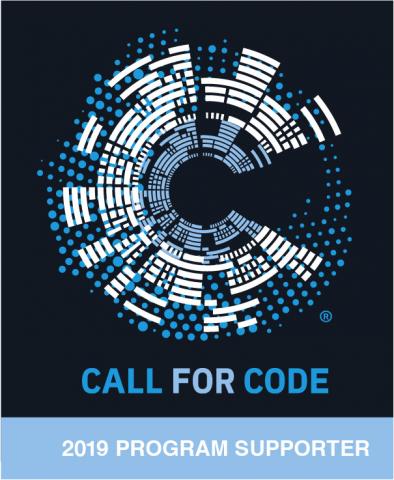You are here
Call for Code Support A
AREDN Supports Call for Code 2019
Do you want to help improve disaster communications?
Do you want to use your AREDN network as a foundation for solutions to improve disaster relief efforts?
Do you develop computer applications and want to help improve disaster communications? AREDN asks you to make a difference with your code.
AREDN is a 2019 Call for Code Program Supporter. Join Call for Code in building solutions to improve disaster relief efforts and a chance to win $200,000
This year's Call for Code program decided to add an emphasis on healthcare needs in the lead up to and aftermath of natural disasters. The program's Chief Technology Officer (CTO) Daniel Krook writes "Specifically, we’re calling on developers to create solutions that address the following aspects of healthcare:
- Food and water safety
- Medical supply distribution
- Tracking and halting disease epidemics
- Access to medical health records
- Mental health
- Serving vulnerable populations
We based our healthcare emphasis on the Sendai Framework for Disaster Risk Reduction from the United Nations Office for Disaster Risk Reduction (UNISDR). You can learn about the specifics of this framework – and how it applies to building potentially life-saving application – in our blog post, “How the Sendai Framework aims to reduce the risk of natural disasters.”
Mr. Krook said about last year's challenge "Last year, more than 100,000 software developers, data scientists, and technologists from 156 nations stepped up to answer the Call for Code. These developers selflessly gave their time and talent to build solutions that can help communities prepare for, respond to, and recover from natural disasters. We began this global challenge with a hypothesis that developers have the power to change the world and save lives. We had no idea the degree to which they would commit."
The 2018 winner, Project Owl, was a huge success.Their Internet of Things (IoT) hardware solution, called ducks, creates a mesh network when deployed. Once the network is up, anyone can log on to the OWL emergency network and connect to the software solution, which asks a series of questions to potential victims about their whereabouts and needs in a disaster. On the other end of the software, first responders would be able to assess needs and address them accordingly.

Theme by Danetsoft and Danang Probo Sayekti inspired by Maksimer
